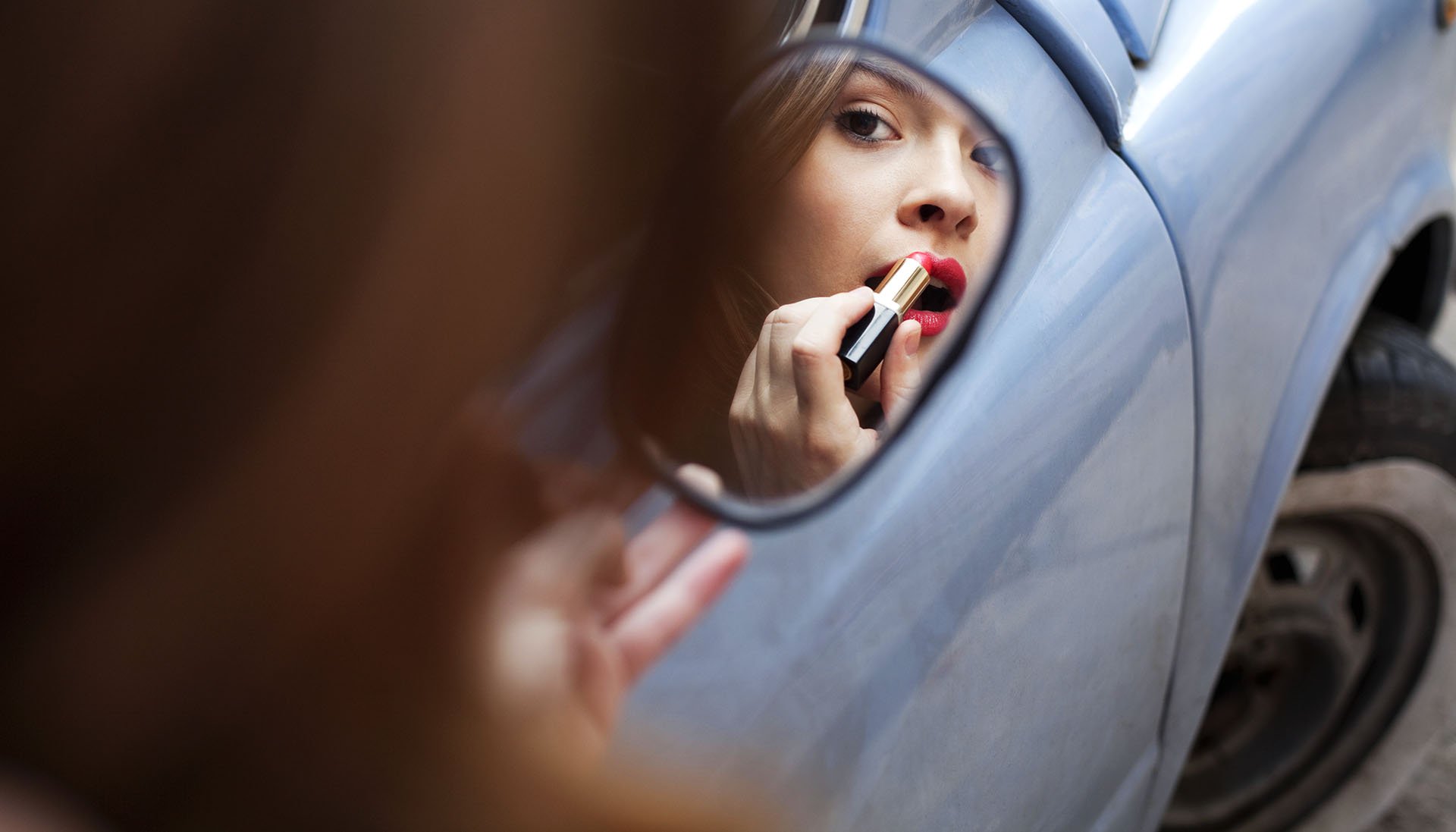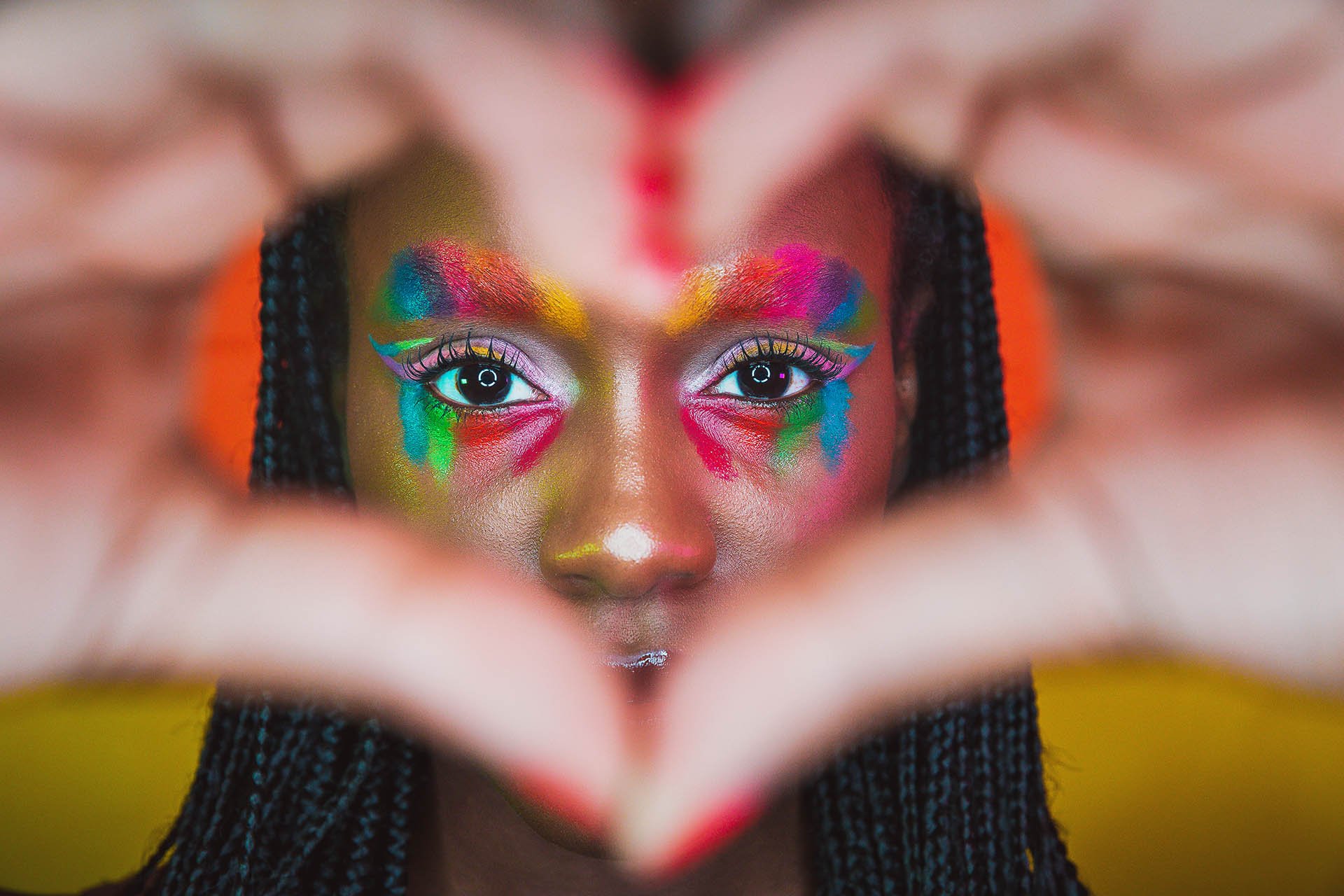Pause and pondr
does makeup hold us back or set us free?
Summary: In this guide, we look at one aspect of beauty: makeup. Expectations of whether, or how, people use cosmetics can reinforce gender stereotypes. Yet for some, makeup is an indispensable tool for self-expression and even safety.
WHAT YOU’LL LEARN
The economic and social importance of the beauty industry
How makeup is used as a form of self-expression
How was makeup used in history?
Beauty is a powerful word with as many definitions as there are people. The array of personal cosmetic styles is seemingly endless — but our choices of brilliant colors or subtle shades are influenced by our cultural backgrounds, a long history of beauty traditions, and a powerful cosmetics industry.
But where does the history of beauty begin? Most of us are familiar with depictions of Cleopatra’s dramatic eyeliner — a well-known example of ancient Egypt’s elaborate beauty culture that dates back more than 5,000 years. In fact, archeologists have found evidence that humans may have adorned themselves with ochre, a natural stain, 100,000 years ago.
While most of us think of makeup as exclusively a feminine product, at various points in history men have used it too. For example, in 18th-century Europe men commonly used powder, rouge, lipstick and wigs as a way to signal their aristocratic status. For many men in the American colonies, these fashions were rejected as symbols of English rule. But in later eras, such as the 1970s and 80s, male grooming again became more elaborate, particularly for pop-culture performers (think Prince, Kiss, and David Bowie).
The cosmetic industry’s roots run deep, so it’s no surprise that the products we use — and who uses them — have changed dramatically over the centuries. The widespread use of mass-market cosmetics dates back to the 1920s and 30s when movie stars began to have an influence on popular culture. Today, makeup has grown into a global industry worth $483 billion, and has become an essential part of getting ready to face the world for many people. Estimates of women (ages 30 to 59) who wear makeup everyday range from 18% to 41%.
How is makeup meaningful?
For some, makeup is far from frivolous — it is a way to stay safe and be seen in a world that might overlook them or cause them harm. Rae Nudson, author of “All Made Up: The Power and Pitfalls of Beauty Culture, from Cleopatra to Kim Kardashian,” says that for many people, cosmetics are “a tool to navigate the world when the world wasn’t built for them. It’s a way to fit into beauty standards.” While we may think of makeup as primarily made for grabbing attention, Nudson says “It’s also a way to avoid scrutiny.” This can be especially true for those whose appearance doesn’t fit traditional expectations, like transgender and gender nonbinary people.
Social media has helped many trans and genderqueer people create communities and cosmetics are a point of connection for some of these groups. YouTube and Instagram tutorials and classes allow many trans and non-trans women to share tips for those who are trying to feminize their features. Some of these ideas originate in the culture of drag performers, which has embraced experimentation and originality in makeup, fashion, and beyond. For many in these communities, makeup is a liberating and a relatively inexpensive way to express one’s individuality.
Meanwhile, more men are wearing makeup or would consider it. According to one poll, one-third of young men said they would consider wearing makeup, while 23% of all men polled said they would. There is less stigma around men buying and using beauty products, and gender-neutral products are on the rise, though male consumers in the poll chose more understated products like concealer and tinted moisturizer
What are the cultural and societal expectations around makeup?
While makeup can be a source of joy and pride for some people, it can also perpetuate unfair expectations and racial and gender stereotypes. As Nudson says, “Our beauty standards are based on whiteness, and women of color are judged differently. Their appearance is more closely scrutinized.”
A 2017 Allure article noted that “there’s nothing inherently sloppy or unpolished about an unmade-up face…(but) women are told they look tired or ill when they don’t wear makeup...while men can simply splash some water on their faces and walk out the door.” Our cultural expectations of women’s faces are so deeply connected to the use of cosmetics that seeing a woman without makeup can erode our confidence in her abilities, and even make us wonder whether she’s able to perform her job — studies have shown that women who wear a certain amount of makeup were perceived to be more competent at their jobs.
Also, employers can and do expect women to use cosmetics —and some have argued that the amount of time and money spent on these products and rituals creates an unfair burden on women. Meeting beauty standards can be pricey: The average woman spends about $313 per month on cosmetics and beauty treatments like hair cuts. Altogether, these monthly expenditures total more than $225,000 over the course of a lifetime, which is more than the cost of most four-year college degrees. While Nudson calls makeup “a tool like anything else,” some would rather opt out of its use but find that their work lives just won’t allow it.
While some celebrities like Alicia Keys have publicly broken up with cosmetics, and others including Gwyneth Paltrow attend makeup-free dinner parties, our culture isn’t going to kick its lipstick habit anytime soon. But as time goes on and attitudes evolve, we may all come to agree that using makeup should be a personal choice, not a social expectation.
Pondr This
How do you define beauty? And what has informed your ideas?
What’s your relationship with makeup, if any?
What are some of the gender expectations that you have experienced in your life?
Questions for leaders:
Why do you think it has been so important in our culture to be able to readily categorize people in one of the two traditional genders?
Are there any intentional or unintentional expectations placed on people based on their gender in the workplace?
What are some ways that your institution can be more gender-inclusive in its policies or practices?
Explore The Stories
BEAUTY AND GENDER: A toolkit
‘Transcending self’: telling the stories of non-binary youth
‘A POLARIZING FORCE OF CHANGE’
Gen z influencers cast ‘wider net of what beauty can be’
Topic Review
Summary: We explored how beauty is — and how it should be — for everyone.
Continue Your Journey
We saw how social media has created some space for gender nonconforming and genderqueer people to defy heteronormative beauty standards.
With the rise of Gen Z influencers and people who are challenging those societal norms, the mainstream beauty industry is also slowly reevaluating their marketing and brands to become more inclusive and embrace the idea that beauty does not have to be limited to the femine beauty ideal — nor that makeup is solely for women.
The marketing company Traackr found that people were engaging with content mentioning non-binary, transgender, and gender-fluid beauty terms by over 50% from June 2020 to June 2021, compared with the previous year. This shows that many indie brands are taking the helm in inclusive marketing and branding, and giving what Gen Zers want to see: a more authentic portrayal and representation of themselves.
Brands like Rihanna’s Fenty Beauty, Fluide, Noto Botanics, and Milk Makeup are all gender-inclusive cosmetic lines that are making waves. Many of these brands also donate a portion to LGBTQIA+ causes.
A makeup artist may have said it best in an interview with Harper's Bazaar — “Remember, makeup is a form of expression just like music or art. It doesn’t have a gender.”







